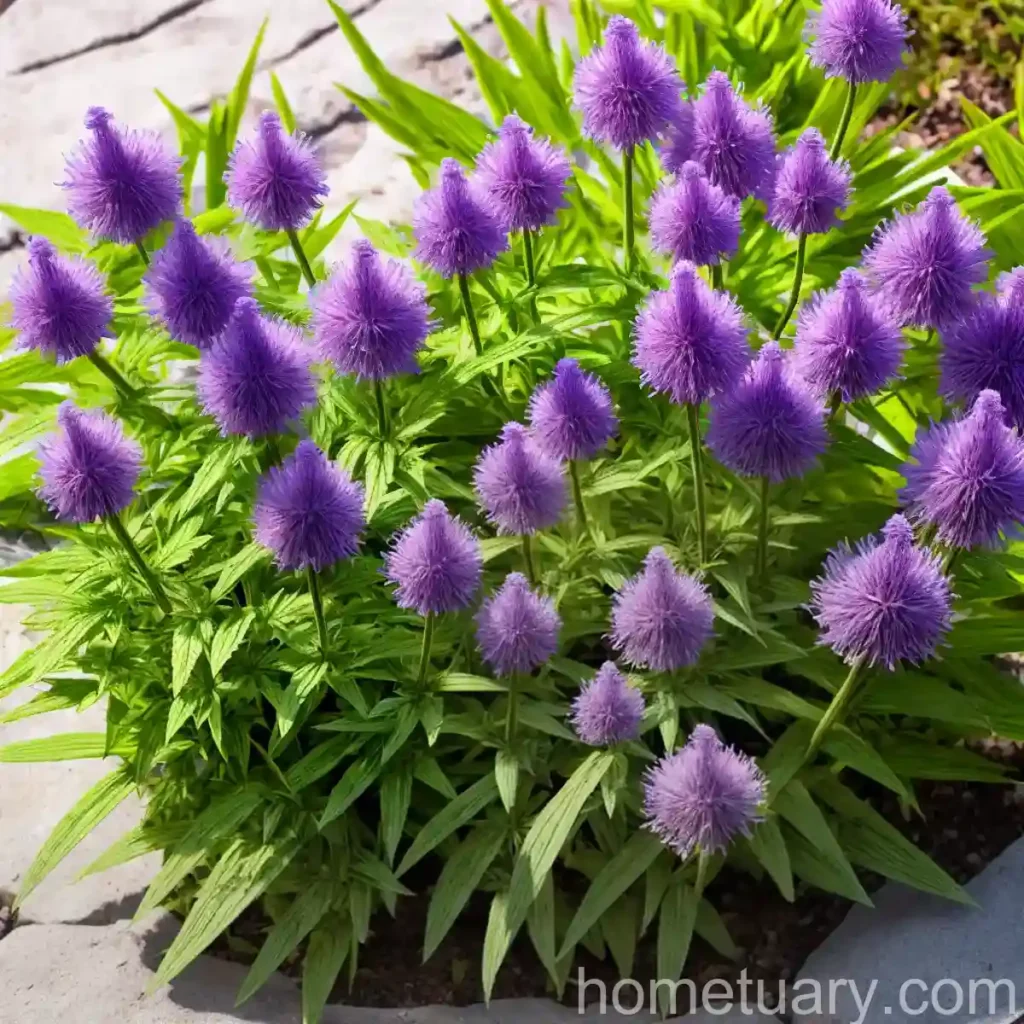Joe-Pyeweed (Eutrochium fistulosum): A Fascinating Native Plant
Introduction
As a plant scientist, I have had the opportunity to study and appreciate numerous plant species. Among these, Joe-pyeweed (Eutrochium fistulosum) has always stood out due to its distinctive characteristics and multifaceted uses. In this comprehensive guide, we will delve into the various aspects of Joe-pyeweed, covering its characteristics, optimal growing conditions, care tips, uses, and much more.
What is Plant :Joe-pyeweed (Eutrochium fistulosum)?
Joe-pyeweed, scientifically known as Eutrochium fistulosum, is a striking North American native perennial plant belonging to the aster family, Asteraceae. This herbaceous plant is renowned for its towering height, vibrant clusters of flowers, and its ability to attract pollinators and wildlife. With a rich history of medicinal and cultural uses, Joe-pyeweed has secured its place in both natural habitats and cultivated gardens.
Key Takeaways – Joe-pyeweed (Eutrochium fistulosum)
Let’s explore the key takeaways of Joe-pyeweed, encompassing its benefits, cultivation, characteristics, and ecological significance.
Joe-Pyeweed Benefits
- Attracts pollinators such as bees, butterflies, and hummingbirds
- Serves as a valuable source of nectar and pollen for beneficial insects
- Adds a striking vertical element to garden landscapes
- Contributes to biodiversity and supports wildlife in native habitats
- Showcases remarkable resilience and adaptability in various growing conditions
Eutrochium fistulosum Characteristics
- Tall, upright habit with sturdy stems
- Profuse clusters of small, tubular flowers in shades of pink, purple, or white
- Deeply lobed, lance-shaped leaves
- Ability to thrive in wetland areas, making it valuable for rain gardens and water features
Joe-Pyeweed Growing Conditions
- Prefers moist to wet soil, thriving in areas with adequate water availability
- Adaptable to a range of light conditions, from full sun to partial shade
- Demonstrates significant tolerance to clay or loamy soils
- Thrives in regions with a temperate climate, particularly in zones 3 to 9
Best Companion Plants for Joe-Pyeweed
- Purple Coneflower (Echinacea purpurea)
- Black-eyed Susan (Rudbeckia hirta)
- Swamp Milkweed (Asclepias incarnata)
- Cardinal Flower (Lobelia cardinalis)
- Ironweed (Vernonia spp.)
Culture
Uses
Joe-pyeweed serves both practical and ecological purposes, making it a cherished addition to diverse settings.
-
Ecological Significance: In nature, Joe-pyeweed plays a pivotal role in wetland ecosystems, contributing to the overall health and balance of these habitats. Its ability to attract pollinators and support a variety of beneficial insects underscores its ecological importance. Moreover, Joe-pyeweed’s ornamental appeal adds aesthetic value to natural landscapes, further enhancing its significance.
-
Garden Ornament: In cultivated settings, Joe-pyeweed stands out as a stunning ornamental plant, particularly in wild or cottage-style gardens. Its vertical growth habit and prolific blooms make it a focal point in perennial borders and meadow gardens.
-
Medicinal and Cultural Uses: Historically, certain Native American tribes have utilized different parts of Joe-pyeweed for medicinal purposes. While it is important to exercise caution and seek expert guidance when considering the medicinal use of any plant, understanding its historical significance provides a broader perspective on the plant’s cultural heritage.
Water
The water requirements of Joe-pyeweed are notably tailored to its natural habitat, where it typically thrives in moist to wet soils. When cultivating Joe-pyeweed in garden settings, it is essential to ensure consistent moisture, particularly during the establishment phase. However, it is crucial to avoid waterlogged conditions, as this can lead to root rot and other detrimental effects.
Sunlight
One of the remarkable attributes of Joe-pyeweed is its adaptability to varying light conditions. While it flourishes in full sun, it can also thrive in partial shade, making it suitable for a diverse range of garden environments.
Fertilizer
Joe-pyeweed, with its native resilience, does not necessarily demand heavy fertilization. When grown in fertile soils, it often displays robust growth without the need for excessive fertilization. However, a balanced application of organic matter during the planting phase can provide a beneficial nutritional boost.
Soil
The soil preferences of Joe-pyeweed align with its natural inclination towards moist environments. It exhibits a notable tolerance for various soil types, including clay and loamy soils. In garden settings, amending the soil with organic matter can aid in maintaining adequate moisture levels and providing essential nutrients.
Pruning
Pruning is a crucial aspect of maintaining the health and aesthetic appeal of Joe-pyeweed. An essential technique involves deadheading spent flowers to encourage prolonged blooming and prevent the plant from self-seeding excessively. Additionally, removing damaged or diseased foliage promotes overall plant vigor and reduces the risk of pest infestations.
Propagation
Propagating Joe-pyeweed can be achieved through several methods, including division and seed sowing. Dividing mature clumps in early spring allows for the expansion of existing plantings. Collecting and sowing seeds in a controlled environment can also yield new plants, providing an opportunity to introduce genetic diversity.
Container Popularity
While Joe-pyeweed is typically associated with naturalistic or expansive garden settings, it is gaining recognition for its potential in container gardening. When selecting a container for Joe-pyeweed, it is crucial to ensure adequate depth to accommodate its robust root system. Pairing Joe-pyeweed with complementary companion plants can result in visually captivating container arrangements.
Container Common Diseases
In container settings, Joe-pyeweed may be susceptible to certain diseases, especially if proper cultural practices are not followed. Common container diseases include:
-
Powdery Mildew: This fungal disease can affect the foliage, leading to a whitish powdery growth. Adequate air circulation and the use of disease-resistant cultivars can help mitigate this issue.
-
Root Rot: Overly compacted or waterlogged soil in containers can predispose Joe-pyeweed to root rot. Employing well-draining soil and exercising moderation in watering can aid in preventing this condition.
Disease Diagnosis
Diagnosing and addressing potential diseases in Joe-pyeweed requires attentive observation and prompt intervention. Timely identification of symptoms such as leaf discoloration, wilting, or abnormal growth patterns enables effective treatment strategies. Consulting with a plant health specialist can provide valuable insights in managing specific diseases that may affect Joe-pyeweed.
Common Pests
While Joe-pyeweed exhibits a commendable resistance to many pests due to its native vigor, certain insect pests may still pose occasional challenges. Common pests include:
-
Aphids: These small, sap-feeding insects can colonize the new growth of Joe-pyeweed. Employing natural predators or targeted insecticidal treatments can help manage aphid populations.
-
Japanese Beetles: The foliage of Joe-pyeweed may be targeted by Japanese beetles, resulting in visible feeding damage. Implementing measures such as handpicking and employing insecticidal controls can aid in mitigating their impact.
Botanist’s Tips
Through careful observation and experimentation, botanists and horticulturists have uncovered valuable insights that can enhance the cultivation and appreciation of Joe-pyeweed. Leveraging these tips can contribute to the successful integration of Joe-pyeweed in diverse gardening and conservation endeavors.
-
Native Plant Conservation: By incorporating native plants such as Joe-pyeweed in ecological restoration projects, botanists play a vital role in conserving biodiversity and restoring the natural balance of ecosystems.
-
Genetic Diversity: Encouraging the cultivation of different varieties and genotypes of Joe-pyeweed through controlled breeding initiatives can bolster the plant’s resilience and adaptability.
-
Integrated Pest Management: Emphasizing a holistic approach to pest management, botanists advocate the integration of natural predator populations, biological controls, and cultural practices to maintain the health of Joe-pyeweed populations.
Fun Facts
Dive into these intriguing facts about Joe-pyeweed to gain a deeper appreciation for this remarkable plant:
-
The genus name “Eutrochium” is derived from the Greek words “eu,” meaning well, and “troch” signifying wheel, alluding to the rounded stem cross-section characteristic of some species in the genus.
-
Joe-pyeweed’s common name stems from the Native American medicinal use of the plant, particularly by the Joe-Pye, a Native American healer from Massachusetts.
-
Several butterfly species, including the regal fritillary and various swallowtails, rely on Joe-pyeweed as a host plant for their caterpillars, emphasizing its critical role in supporting butterfly populations.
Links to External Resources
Bringing together various resources on Joe-pyeweed can offer valuable insights and practical guidance for enthusiasts, gardeners, and conservationists. Explore the following links to deepen your knowledge of Joe-pyeweed:
-
United States Department of Agriculture – Eutrochium fistulosum
-
North Carolina State University Extension – Joe-Pye Weed in the Garden
-
The Xerces Society for Invertebrate Conservation – Supporting Native Pollinators
In the pursuit of comprehensive knowledge and practical application, these resources serve as valuable references, enriching the understanding and management of Joe-pyeweed in diverse contexts. By integrating insights from reputable sources, individuals can foster the sustainable cultivation and conservation of this captivating native plant species.
In conclusion, Joe-pyeweed, with its distinctive features and ecological significance, stands as a captivating representative of North American native flora. From its impressive stature to its ecological interactions, Joe-pyeweed embodies a rich tapestry of ecological and cultural connections. By embracing its role in supporting biodiversity, enhancing garden landscapes, and contributing to natural habitats, Joe-pyeweed occupies a revered place in the realm of native plants. As we continue to explore the multifaceted appeal of Joe-pyeweed, it is evident that this remarkable plant remains a source of inspiration and admiration for enthusiasts and conservationists alike.















